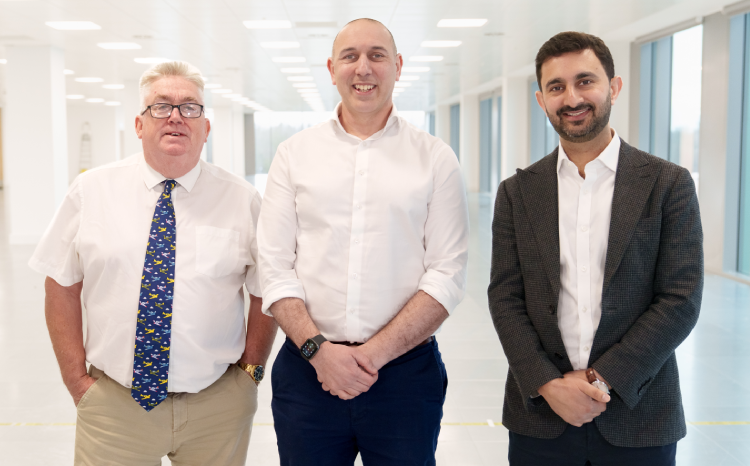Enter the CCG
- 5 March 2013

The report of Robert Francis QC into the Mid Staffordshire NHS Foundation Trust scandal has been a wake-up call for the entire NHS.
All its organisations will need to have feelers out in order to be constantly aware of what is actually going on in their patch.
One of the innovative features of the extranet that I talked about in my last column is the ‘big red button’ through which all healthcare workers can report their concerns.
My idea is that clinical commissioning group staff at the receiving end will re-route these messages to the appropriate person or department, for action.
Shortly after the publication of the Francis report, I was able to tell the CCG’s chief operating officer that these simple features should act as an effective early warning system for use by healthcare staff. It’s nice to be ahead of the curve for once!
There’s been an interesting refinement of the big red button process, too. At the last meeting of the National Clinical Reference Panel for Choose and Book, I described the BRB, and how easily we could use it to gain local input from healthcare workers about problems with the electronic booking system.
The concept was received with acclaim. The BRB system is so simple in principle– invite comments (including anonymous ones), collate them and take action – that it can easily be adapted to accept all forms of feedback, and all levels of problems, including detailed polishing and fine-tuning of the CCG’s systems.
Boozing and chucking
Away with the generalisations: it’s time to get specific. I want to start making inroads into my informatics targets. (Correction: I’m not interested in targets – I only want to do things because they’re worthwhile, rather than because someone has set me an arbitrary percentage to hit.)
C&B has a bad reputation –quite understandably. It’s a brilliant idea, completely negated by the poor, non-holistic way in which it was initially introduced. But as with so many things in NHS IT, there’s a pearl buried deep in the detritus, and I want to bring it out and polish it.
Choose and Book (or Booze and Chuck, as my colleagues often call it) suffers from a number of major problems, many under local control.
In particular, hospitals don’t always remember to update their Directory of Services to include all their clinics; or else don’t add all the appropriate SNOMED terms.
This means that searching for clinics dealing with a specific problem – such as ‘sleep apnoea’- might only return details of a hospital 30 or more miles away – even though the local ENT clinic deals with it.
No more crazy statistics
And then there were the statistics. For some odd reason, many primary care trusts and strategic health authorities measured the uptake of C&B as a percentage of all consultant referrals, rather than as a percentage of all those referrals – to anyone – that could actually be made electronically at the time; which is quite a different figure.
This important distinction became known as ‘the denominator problem’. As a result, even the most assiduous of our local GPs scored poorly.
A GP might have ‘a 45% uptake’ of C&B – and be reprimanded for it. Yet when the clinics that couldn’t be booked were taken out of the denominator, and the non-consultant clinics that were electronically bookable were added in, their actual usage might be nearer 95%.
Even though the DH (correctly) stated that absolute statistics on C&B uptake should be used neither for the performance management of GPs nor for comparisons between PCTs, many NHS bodies ignored this advice and used the first set of figures to berate family doctors ‘for their lousy uptake’.
I want to change all of this. I will not – repeat, not – allow any of these crazy statistics on my patch.
There are only three decent alternatives: measure uptake as a percentage of all referrals that could have been booked electronically; use the raw data, but recognise that only the trends within an individual CCG are meaningful; or ignore the lot. Nothing else is valid.
Working with hospitals
So, what am I going to do to improve C&B usage? First, I’m going to find out who in the local hospitals are responsible for the maintenance of their DOSs, so we can set up a dialogue with them.
Next, when our extranet comes into action, I’m going to encourage practices to use the big red button to report occasions when they can’t find clinics. Then I’m going to the local hospitals with the evidence.
Secondly, I will be encouraging local hospitals to put consultants’ names on their DOS. Doing this improves C&B uptake by about 10% because, if GPs can’t find the consultant of their choice electronically, they will often get round the problem by writing a paper referral.
Thirdly, I’m going to keep my eye on hospitals’ behaviour over the allocation of appointment slots. Nationally there have been many examples of gaming by hospitals, and I want to deal with any I find.
These include hospitals deliberately restricting the number of appointments that patients can be booked into and then booking the patient outside C&B, so the true waiting time becomes invisible.
This also created the ‘send us an additional fax’ nonsense. But once a referrer has initiated the referral and attached the referral letter they do not need to send a faxed copy as well. As well as being unnecessary, it’s against clinical governance guidelines.
If the hospitals won’t play ball, then I will be informing the commissioning and contracting departments of the CCG.
Finally, I’m going to recommend that practices are rewarded for keeping their C&B rates high. Many doctors find that it takes significantly longer to make an electronic referral. Time is money: why should hard-worked practices have to fork out just because the NHS benefits in other areas?
Less yelling, more polishing
After all this I expect the use of C&B in our area to soar. I have no intention whatsoever of berating my colleagues. Instead, I want to polish the system to make it truly fit for purpose, easy – and even enjoyable – to use; and then stand back while everyone reaps the benefits.
About the author: Dr John Lockley is clinical lead for informatics at Bedfordshire Clinical Commissioning Group and a part-time GP.




